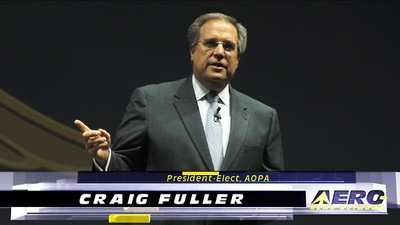Wed, Mar 21, 2012
No Accidents In Sport Pilot Category Attributed To Medical Deficiency
The EAA and the AOPA on Tuesday jointly filed a request for an exemption with the Federal Aviation Administration that, if granted, stands to increase the level of safety and significantly reduce a substantial economic and regulatory burden for pilots who fly recreationally.

Currently, FAA regulations require all pilots to hold at least a third-class medical certificate to exercise the privileges of a private or recreational certificate. EAA and AOPA are asking the FAA for an exemption to that rule, which would give pilots who fly recreationally the option of getting a third-class medical or, instead, participating in a recurrent online education program that will teach them how to self-asses their fitness to fly.
The education program will cover aeromedical factors and exceed the training presently mandated by the FAA. Participating pilots would also be required to hold a valid driver’s license and conduct a meaningful self-assessment prior to flight. The self-assessment required in the exemption will be similar to what pilots do now between AME visits. The difference is that pilots will have a higher level of knowledge to do the self-assessment after completion of the required education program.
The requested exemption would help to mitigate the increased risk inherent in transitioning to unfamiliar and sometimes distinctly different aircraft, which is the only current available alternative to the FAA’s third class medical. This exemption request has been built upon substantial evidence obtained over the past 20 years, most recently proven through the successful medical safety standards allowed under the sport pilot certificate, which currently utilizes the driver’s license medical standard in lieu of an FAA medical certificate.

In the seven years since the sport pilot driver’s license medical standard was established, the National Transportation Safety Board (NTSB) has not attributed a single accident in that category to medical deficiency. Interestingly, the majority of accidents involving aircraft eligible under sport pilot is classified by the NTSB as instructional or transition flights. The jury is in: the sport pilot medical requirement works. The EAA/AOPA exemption request builds on seven years of positive safety data from using driver’s license medical certification with sport pilots, and reduces transition-related safety issues by primarily keeping pilots in familiar aircraft.
The AOPA/EAA-requested exemption would be allowed for use in the particular size of aircraft , including single engine, 180 horsepower, fixed gear, and types of operations, such as day, VMC, one passenger, and not for-hire, typically classified as recreational flight.
A 2009 AOPA policy survey found that 72% of the member respondents expressed a strong interest in eliminating the third class medical requirement for pilots flying recreationally. “This initiative will preserve the freedom to fly by reducing a significant hurdle in the lives of many pilots and entrants into general aviation while maintaining or enhancing safety,” said EAA President Rod Hightower. “It would also greatly increase the number of aircraft available for pilots flying strictly for recreation and encourage pilots to continue to fly in aircraft in which they are already familiar.”
“Our petition offers substantial economic savings to pilots and the U.S. government,” said AOPA President Craig Fuller. “A conservative estimate shows a savings of $241 million for pilots and $11 million to the federal government over 10 years.”
More News
Aero Linx: International Business Aviation Council Ltd IBAC promotes the growth of business aviation, benefiting all sectors of the industry and all regions of the world. As a non->[...]
"During the annual inspection of the B-24 “Diamond Lil” this off-season, we made the determination that 'Lil' needs some new feathers. Due to weathering, the cloth-cove>[...]
Also: Bushcat Woes, Hummingbird 300 SL 4-Seat Heli Kit, Carbon Cub UL The newest Junkers is a faithful recreation that mates a 7-cylinder Verner radial engine to the airframe offer>[...]
Also: Seaplane Pilots Association, Rotax 916’s First Year, Gene Conrad After a decade and a half of struggling with the FAA and other aero-politics, G100UL is in production a>[...]
Also: Martha King Scholarship, Montaer Grows, Textron Updates Pistons, FlySto The FAA is hiring thousands of air traffic controllers, but the window to apply will only be open for >[...]
 ANN's Daily Aero-Linx (04.16.24)
ANN's Daily Aero-Linx (04.16.24) Aero-News: Quote of the Day (04.16.24)
Aero-News: Quote of the Day (04.16.24) Airborne 04.10.24: SnF24!, A50 Heritage Reveal, HeliCycle!, Montaer MC-01
Airborne 04.10.24: SnF24!, A50 Heritage Reveal, HeliCycle!, Montaer MC-01 Airborne 04.12.24: SnF24!, G100UL Is Here, Holy Micro, Plane Tags
Airborne 04.12.24: SnF24!, G100UL Is Here, Holy Micro, Plane Tags Airborne-Flight Training 04.17.24: Feds Need Controllers, Spirit Delay, Redbird
Airborne-Flight Training 04.17.24: Feds Need Controllers, Spirit Delay, Redbird




